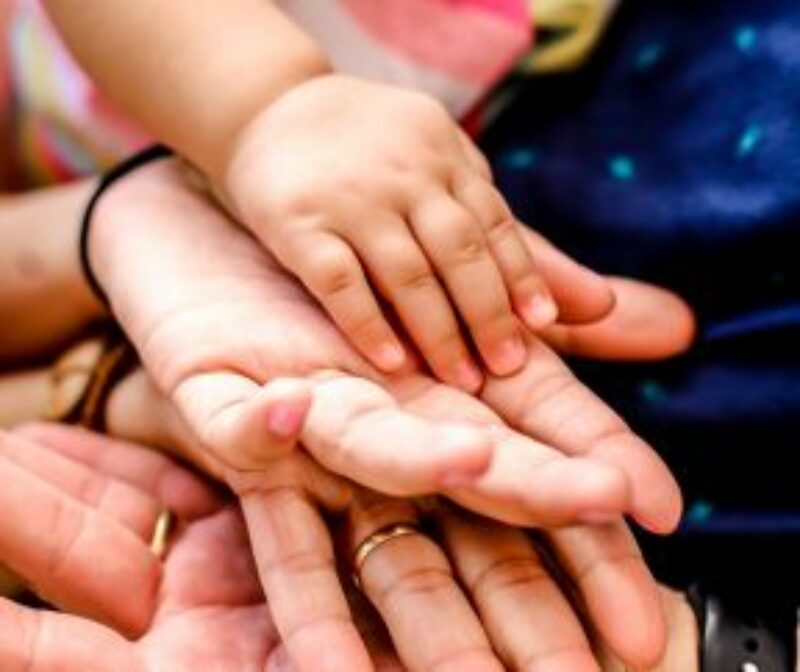“Love and compassion are necessities, not luxuries.”
His Holiness, the Dalai Lama
If you ask me, love is one of the most beautiful concepts there is. While love is not always easy, in my darkest hours, I am rarely soothed by the things I dislike. When the workload is too demanding, the back-to-back Zoom calls are taking a toll my sanity, and heartbreaking news overwhelms my senses (again)—I look to heal through love, and not just romantic love. We also heal through the love of a friend, a pet, a mother (thank you, mom!), or, in my case, the love of laying in the grass while looking at the sky on my tiny square of front yard. When life feels bleak (and after I’ve had a good cry), I find myself sprawled beneath the sky, calling a friend, or relishing the cuddles of my new kittens.
The Benefits of Love
This urge is not just because kittens are cute. As love researcher Barbara Fredrickson tells us, our bodies crave it. Various studies support the important physical and mental benefits of love. For example, in one study, researchers explored the effects of hand holding and hugging among two sets of couples before speaking in public. Results showed that the couples who held hands for 10 minutes and then hugged for 20 seconds had a healthier response to stressful events, including lower systolic blood pressure and a slower heart rate. Interestingly, this positive effect was the same for both men and women, but more powerful for people who identified as Black than White. This suggests that a display of love has a different level of impact in different people.1
I could wax poetic about the benefits of love all day. In a second study, researchers interviewed 404 adults every day over the course of two weeks, finding that people who received more hugs had lower levels of conflict in their relationships, were less emotionally affected by any conflicts that did occur, and had fewer symptoms of sickness than those who were hugged less!2 Other studies have found that high quality romantic relationships are associated with lower blood pressure;3 physical pain can be reduced up to 44% by just looking at a photograph of someone you love;4 and simply thinking about your partner for about five minutes can boost your energy levels for up to 25 minutes!5 If that wasn’t enough, people in strong social relationships (romantic or otherwise) were half as likely to experience depression 10 years later, compared to their counterparts.6
Love Boost Tip
Give yourself a love boost! Hold those hands, pack in those hugs, look at pictures of loved ones, or simply think about them for five minutes. Find more, as Barbara Fredrickson calls them, micro-moments of love7 each day (e.g., sharing a smile with a neighbor or laughing with friends), even if briefly.
So, if you’re looking for a new way to deepen your closeness with someone—whether it’s a friend who you’ve known forever, a partner who you thought you already knew everything about, a parent, or a neighbor—try out this exercise.
The 36 Questions that Lead to Love and Closeness
Why should I do these?
Even though the title says “love,” these 36 questions were developed to foster a sense of closeness—not just romantically, but for friendships, too! The original study that produced this questionnaire paired two strangers together and asked them to answer all the questions with each other. Even though the pairs hadn’t known each other before the study, they felt significantly closer to each other at the end of the experiment (as opposed to those who simply chit chatted). This was true even if they had different core beliefs and attitudes, and whether or not they thought the exercise would really work.8 So, if you’re currently thinking, “This will never work,” you’re ready to begin!
Who should I do these with?
Anyone! Again, this doesn’t have to be someone you want to feel romantic love with—these can be used for a great date night with a friend, neighbor, or family member. So, get crazy! Do this exercise with anyone you want to deepen and strengthen your feelings for—romantic or platonic.
Timing:
15-50 minutes (or more)
Steps:
- Ask questions back and forth.
There are three sets of questions (see printout). Each set gets a little bit more personal (but don’t worry, these are all PG questions). Each person will answer every question. Be sure to alternate the order. To illustrate: for Question 1, Person A answers first and then Person B; for Question 2, Person B answers first, then Person A; and so on. This varies who answers first and second for each round.
- End on eye contact.
The key to this question game is to enjoy a period of uninterrupted eye contact at the end—with no funny business. It will feel really strange at first, trust me! However, it can reap great rewards. Simply look into the eyes of the person who you’re paired with, and resist the urge to do anything to relieve the tension by:
- Keeping your face neutral (no funny faces).
- Having no staring contests (blink as much as you need).
- Making as few noises or gestures as you can, and absolutely no talking.
- Game play.
Depending on how much time you have, I recommend one of three ways to play:
- Quickest (15 minutes): Pick one to two questions from each of the three sets of questions, and end with 60 seconds of sustained eye contact (as described above). I recommend Questions 1, 5, and 12 from Set I, and Question 13 from Set II.
- Medium (32 minutes): Set a timer for 10 minutes and answer however many questions you can in Set I during that time. Then do 10 minutes on Set II, and 10 minutes on Set III. Even if the timer goes off, make sure each person answers the last question you were on, so that both have a chance to answer. End with two minutes of sustained eye contact.
- The Long Haul (50+ minutes): The original study allowed 15 minutes for each set of questions, followed by four minutes of eye contact. For this version, I recommend doing at least those 15 minutes (with four minutes of eye contact)—and if you’re feeling crazy, go even longer! Sometimes, I do one set at a time with a friend over three nights, ending each set with one to two minutes of eye contact. This gives us the chance to think as deeply and respond as thoughtfully as we want.
In the wild and ever-changing world, I urge us all to thrive by sharing and experiencing more love whenever we can, wherever there is someone who could use it (and I think it’s safe to say everyone can use it). Sending love far and wide! (And if you’re reading this, Mailman Michael, sorry for scaring you the other day with that too-big smile. I’ll tone down my micro-moment next time, I swear!)
References
- Grewen, K. M., Anderson, B. J., Girdler, S. S., & Light, K. C. (2003). Warm partner contact is related to lower cardiovascular reactivity. Behavioral medicine, 29(3), 123-130.
- Murphy, M. L., Janicki-Deverts, D., & Cohen, S. (2018). Receiving a hug is associated with the attenuation of negative mood that occurs on days with interpersonal conflict. PloS one, 13(10), e0203522.
- Birmingham, W. C., Uchino, B. N., Smith, T. W., Light, K. C., & Butner, J. (2015). It’s complicated: Marital ambivalence on ambulatory blood pressure and daily interpersonal functioning. Annals of Behavioral Medicine, 49(5), 743-753.
- Younger, J., Aron, A., Parke, S., Chatterjee, N., & Mackey, S. (2010). Viewing pictures of a romantic partner reduces experimental pain: Involvement of neural reward systems. PloS one, 5(10), e13309.
- Stanton, S. C., Campbell, L., & Loving, T. J. (2014). Energized by love: Thinking about romantic relationships increases positive affect and blood glucose levels. Psychophysiology, 51(10), 990-995.
- Teo, A. R., Choi, H., & Valenstein, M. (2013). Social relationships and depression: ten-year follow-up from a nationally representative study. PloS one, 8(4), e62396.
- Fredrickson, B. L. (2013). Love 2.0: Finding happiness and health in moments of connection. Penguin.
- Aron, A., Melinat, E., Aron, E. N., Vallone, R. D., & Bator, R. J. (1997). The experimental generation of interpersonal closeness: A procedure and some preliminary findings. Personality and Social Psychology Bulletin, 23(4), 363-377.
Continue Exploring

Blog
Created for Community (Part 1): How We Moved Away From our Village
Humans thrive within community, but our modern age encourages poor relational habits. Think about the nature of your relationships with the help of the practice in this post.

Blog
Attachment Styles: Why Does Love Sometimes Feel so Difficult? (Part 1)
What do you need to understand about your attachment style?

Blog
Attachment Styles (Part 2): Will Love Always Feel This Hard?
Understand attachment through this case study.

